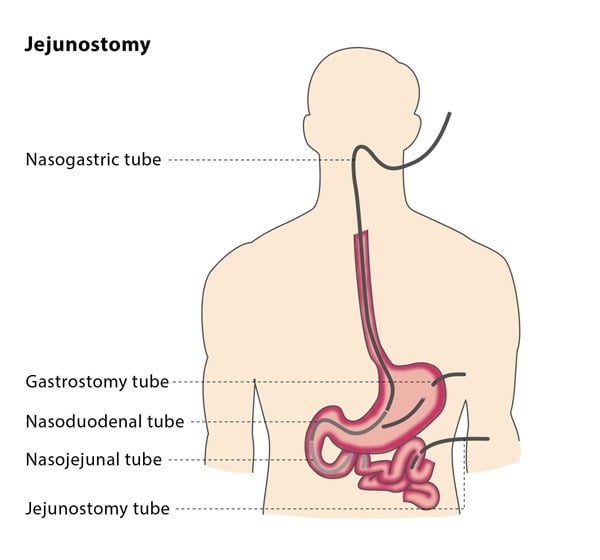Image Source: Google
Jejunostomy tube insertion is a procedure that involves placing a feeding tube directly into the jejunum, which is the middle part of the small intestine. This method is commonly used when a patient is unable to take food orally or through the stomach. Navigating the process of jejunostomy tube insertion can be complex, but with the right information and guidance, healthcare professionals can ensure the procedure is successful and the patient receives the necessary nutrition for optimal health.
Understanding Jejunostomy Tube Insertion
What is a Jejunostomy Tube?
- A jejunostomy tube is a flexible, hollow tube that is inserted through the abdominal wall and into the jejunum.
- It is used to deliver nutrition, fluids, and medications directly into the small intestine.
Indications for Jejunostomy Tube Insertion
- Patients who are unable to tolerate oral or gastric feeding.
- Individuals with conditions such as dysphagia, gastroparesis, or esophageal obstruction.
- Those who require long-term nutritional support.
The Procedure
Preparation
- Patient education and informed consent are essential.
- Confirm the need for jejunostomy tube insertion through medical evaluation and imaging studies.
- Ensure the patient is NPO (nothing by mouth) before the procedure.
Insertion
- The procedure is typically performed under sedation or local anesthesia.
- A small incision is made in the abdomen, and the tube is inserted into the jejunum.
- The tube is secured in place with sutures or a skin disc.
Post-Procedure Care
- Monitor the patient for any signs of complications, such as infection or leakage.
- Provide education on tube care, feeding schedules, and medication administration.
- Regularly assess the insertion site for redness, swelling, or drainage.
Management and Troubleshooting
Feeding and Medication Administration
- Follow a prescribed feeding schedule and formula as directed by the healthcare provider.
- Ensure proper flushing of the tube before and after each feeding or medication administration.
- Monitor for any signs of tube clogging or dislodgement.
Complications
- Potential complications of jejunostomy tube insertion include infection, leakage, tube dislodgement, and bowel perforation.
- Promptly address any complications and consult with the healthcare provider as needed.
- Regular follow-up appointments are essential to monitor the patient's nutrition status and overall well-being.
Conclusion
Jejunostomy tube insertion is a valuable intervention for patients who require alternative means of nutrition delivery. By understanding the indications, procedure, and post-care considerations, healthcare professionals can navigate the ins and outs of jejunostomy tube insertion with confidence. It is essential to prioritize patient safety, provide thorough education, and closely monitor for any potential complications. With proper management and troubleshooting strategies in place, patients can receive the nutrition they need for optimal health and well-being.

